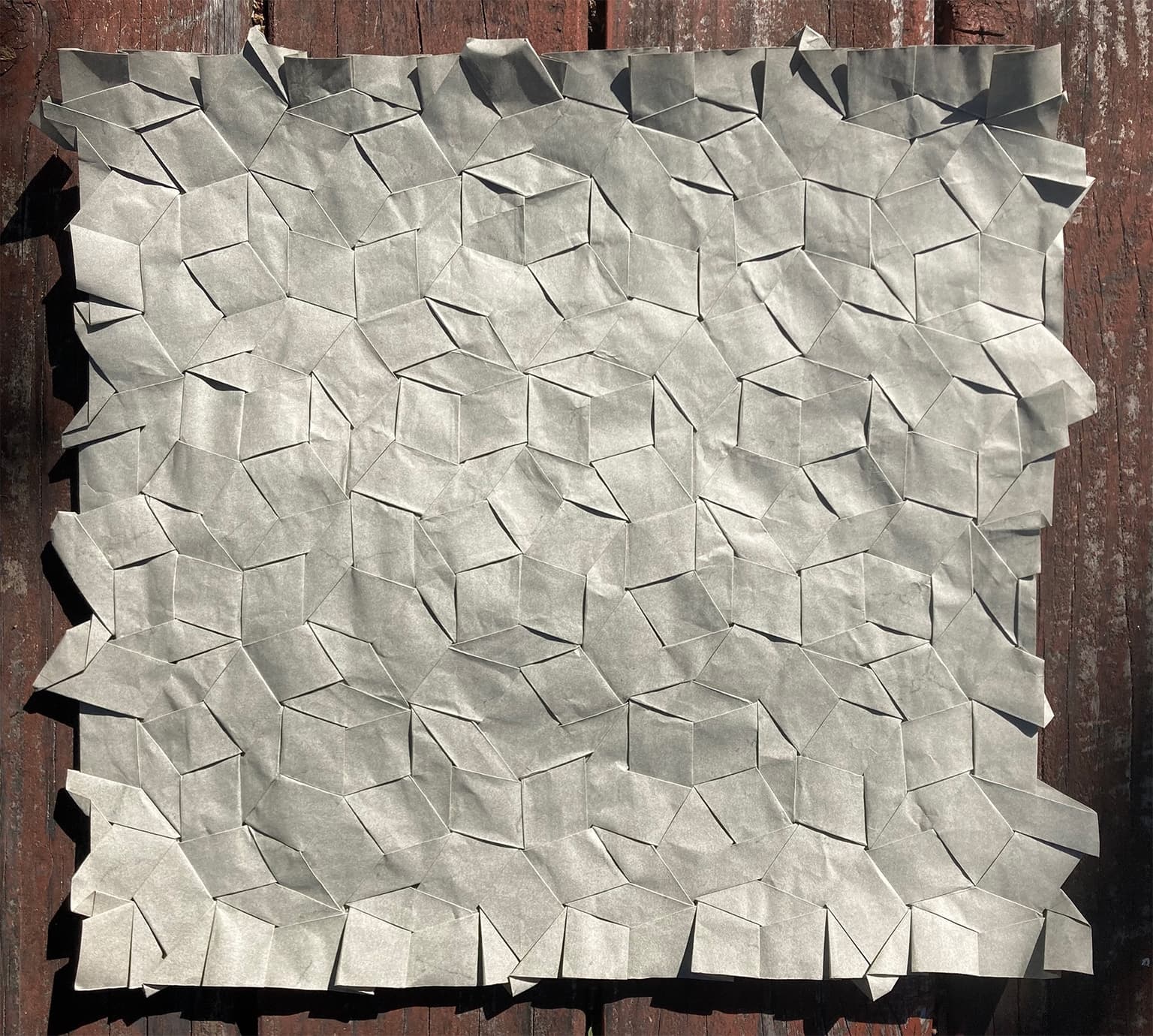Tom Lindquist
Artists
Statement
I have been interested in both math and origami from a young age, and recently I have been interested in the world of origami tessellations. These tessellations are mathematically interesting, allowing for many different types of tiling and symmetry, as well as technically interesting to design and fold, and the final product is visually pleasing. I have been especially fond of tessellations with a three-dimensional aspect to them, although I also enjoy a technique known as "flagstone tessellation" which creates a flat tiling of polygons, generally hexagons, triangles, rhombi and trapezoids.
Artworks

Penrose Weave
38 x 40 cm
Elephant Hide Paper
2022
With this tessellation, I wanted to explore the possibility of creating an origami tessellation based on an aperiodic tiling. It shows the Penrose P3 tiling, using two types of rhombi, which are only allowed to match together in particular ways. This was my first time attempting something like this, so I used a very simple tessellation technique, where the vertices of the tiling are formed by twists on the back of the paper, creating a "weaving" effect. The difficulty in designing this was in creating twists in the paper that produce the 8 desired vertex figures. In order for these twists to lie flat, they produce pleat widths related by the golden ratio, although this beautiful fact is not visible on the front of the tessellation.